List of 13 Longest Battles & Sieges in World History
War is an unfortunate but important reality in the study of world history. For thousands of years, tribes, nations, and allied countries have fought for land, power, and resources.
The outcomes of large-scale wars are oftentimes determined by individual battles and conflicts. Many battles in history lasted for hours or days. Other periods of conflict took years to resolve.
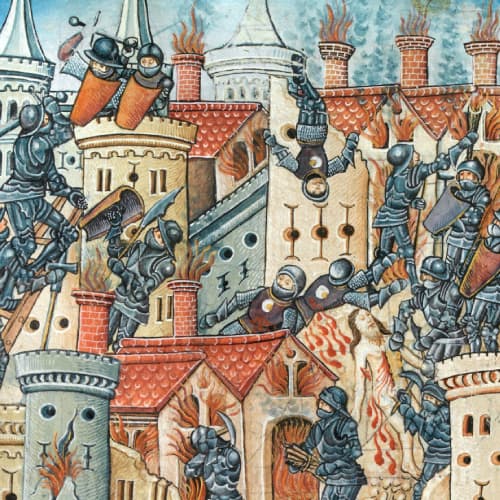
Battles are defined as general periods of fighting between one or more groups. Historically, soldiers have met on battlefields or other strategic landscapes to fight in close-combat.
As military technology advanced, battles could also be fought at sea and from greater distances.
Sieges center on the attack of a city. These events are usually prolonged, as the enemy spends months or years attempting to take the targeted city. Civilians are especially impacted by the starvation and disease that usually accompanies this type of conflict.
This list includes the longest battles and sieges from ancient times to the modern era. These conflicts are some of the deadliest events in world history.
1) Siege of Veii

The siege of Veii was a major event of the Third Veientine War during the Roman period. The siege lasted from 406 to 395 BC.
The city of Veii was located about ten miles from Rome and had a difficult relationship with the the Roman government. Veii was part of the Etruscan League, which banded together against the Romans.
Veii had been a center of terracotta production in the sixth century BC but its economic decline left it vulnerable to attack. Roman officials understood the potential of controlling the city of Veii completely. Taking land outside the city of Rome would strengthen Roman power and literally extend their reach in the area.
After years of growing tension, Roman general Marcus Furius Camillus attacked Veii in 406 BC. According to the writer Livy, the Romans combined siege tactics over a decade-long period to take the city.
Camillus’s men built several ramps and other siege works around the walls of Veii. The people of Veii responded by burning down these structures.
Despite their pushback, the Veientines were no match for Camillus’s tactics. A large frontal assault and tunneling under the walls of Veii guaranteed the general’s success.
In 396 BC, the Roman tunnel broke through into the Temple of Juno in Veii’s citadel and soldiers seized the city. Women and children were sold as slaves, while men were executed.
2) Siege of Drepana

The siege of Drepana was an event of the First Punic War that lasted from 249 to 241 BC. The siege involved the Carthaginians and Romans, who had struggled for years to control Carthage completely.
The siege is defined by the naval battle that took place off the coast of Sicily. The Romans created a blockade in Drepana in an effort to starve out the Carthaginian enemy.
Much to the dismay of the Romans, Carthage held its own by getting supplies through the blockade. Because of their experience with naval conflicts, the Carthaginians were able to successfully resist the Romans’ efforts to conquer.
3) Siege of Carthage
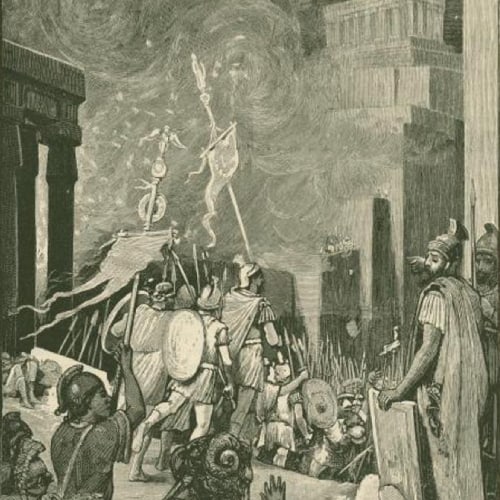
The First and Second Punic Wars led to the final confrontation between Carthage and Rome. The siege of Carthage was the major event of the Third Punic War and took place from 149 to 146 BC.
The city of Carthage was the world’s wealthiest city and the Romans took notice. This siege had a personal feeling that other sieges in history lacked. According to historical records, Cato, a Roman ambassador to Carthage and leader within Rome, was fixated on the prosperity of Carthage.
Prior to the siege of the city, Carthaginians were forced to give up 200,000 weapons and 2,000 catapults. This was a stipulation after the first two wars with Rome, and it left the city completely defenseless.
Cato used this reality to his advantage and attacked Carthage with particular cruelty.
The population of Carthage before the siege was an estimated 200-400,000 people. No less than 150,000 were said to have perished during the three-year conflict.
By the end of the siege, Carthage was completely destroyed. The Romans took 55,000 of the city’s survivors as slaves.
4) Capture of Philadelphia
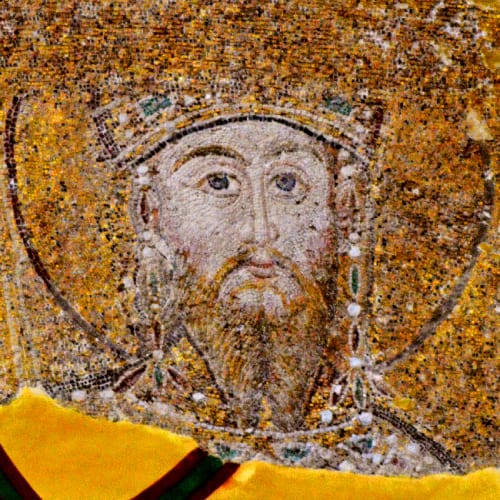
The capture of Philadelphia occurred from 1378 to 1390. Philadelphia was the last remaining city in Asia Minor to be both Christian and Byzantine. The Knights Hospitaller ruled the city.
The remote location of Philadelphia in the Lydian hills helped to secure the city. Strong fortifications and the payment of tribute to local Muslim groups also protected the Christian city from outside threats.
Peace ended for Philadelphia after the Ottomans helped the Byzantine emperor John V Palaiologos reclaim his throne. As a vassal of the Ottoman Empire, the Byzantine leader agreed to assist the Ottomans seize Philadelphia after they had helped him.
The city of Philadelphia resisted the siege for twelve years before falling to the Turks.
5) Siege of Thessalonica

The siege of Thessalonica took place in present day Greece. After being handed over to Venice in 1422 by the Byzantine Palaiologos dynasty, the city of Thessalonica became a place of contention between Venice and the Ottoman Empire.
The Ottoman sultan claimed to right to Thessalonica and refused to acknowledge that Venice controlled it. He launched an eight-year assault on the city that led to a mass evacuation of civilians and starvation amongst those who stayed behind.
During the siege, Thessalonica’s population dwindled from 40,000 to only 2,000 people.
The siege ended in 1430 with the signing of a treaty by Venice, which included tribute and the surrender of Thessalonica, among other demands.
The city would remain under Ottoman rule until 1912.
6) Siege of Ishiyama Honganji
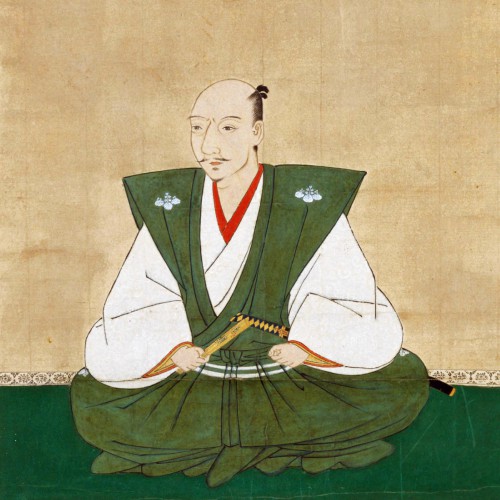
The siege of Ishiyama Honganji is just one major conflict to occur in the life of Oda Nobunaga. It is the longest siege in Japan’s history.
Oda Nobunaga was a Japanese leader who is remembered for his attempts to reunify the country during the Sengoku, or warring states period.
To accomplish his goals, Oda believed it was necessary to eliminate powerful and influential religious groups who opposed him. During this time period, Buddhist groups also functioned as military units. They strongly resisted reunification efforts and wanted to protect Buddhist teachings.
Oda targeted the fortress Ishiyama Honganji, which had both economic and military power. He demanded that the leaders there pay tribute, and give up their lands. Oda also demolished the main temple.
After years of revolts and building tensions, Oda unleashed a massive assault on Honganji in 1576. He created forts around the temple structure and blocked key access points in the area.
Temple leaders called on Mori Terumoto for assistance and he replied by sending 800 boats full of food to Osaka Bay. He crushed Oda’s forces with the help of native pirate groups and incendiary arrows.
After eleven long years of resistance, the abbot of Ishiyama Honganji surrendered to Oda Nobunaga.
7) Siege of Candia

The siege of Candia is remembered as the second-longest successful siege in history. It took place during the Cretan War between the Venetians and the Ottomans.
Candia was a Greek city in Crete that was under Venetian control. Like Thessalonica (described above) the Ottomans set their sites on the Venetian city.
The siege started in 1644 after the Knights of Malta raided an Ottoman convoy and fled to the Candia area. The Ottomans had long desired to control the entire island of Crete, and Candia was the last stronghold of the Venetians.
In response to the attack on their convoy, the Ottomans surrounded Candia. Because of its large harbor, the city was able to receive supplies by sea. They also called France and Spain for help.
The siege lasted for over two decades and the Venetians seemed to be holding their own. It was the first event in history that biological warfare was threatened. The Venetians considered giving the Ottomans a liquid containing the “quintessence” of the Black Death.
After years of struggle, however, support from foreign powers dried up. The Ottomans dug trenches and cut off Candia’s water supply.
By 1669, Candia had lost 100,000 people and surrendered to the Ottomans. Residents were allowed to leave the city in peace.
8) Siege of Ceuta

The siege of Ceuta lasted for twenty-six years and is the longest siege in history. The city of Ceuta is located in North Africa and was controlled by Spain at the time of the siege. The Moroccan sultan sent his general Ali bin Abdullah to attack Ceuta in 1694.
His men settled into the reality of a two-decade siege by cultivating the surrounding land for food.
Realizing their vulnerable situation, Ceuta leaders called on the Marquis of Lede for assistance. He responded by sending 16,000 troops and successfully forced back the Moroccans.
The first stage of the siege ended in 1720 with the outbreak of the plague. It picked up again from 1721 to 1727 and only ended after the death of the sultan.
A major consequence of the siege was the permanent loss of Portuguese culture and currency. Ceuta had previously been ruled by Portugal in the 1400s and the influence of Portuguese culture came to define the city. After the siege, however, Spanish culture and currency replaced historical Portuguese influences.
9) Battle of Verdun

Jumping ahead several centuries, the Battle of Verdun was the longest single battle fought in World War One and is one of the bloodiest in human history.
The battle raged from February to December 1916 between the French and Germans. It is the largest battle of attrition in history, resulting in 1 million casualties and 300,000 deaths.
The Battle of Verdun was largely orchestrated by Erich von Falkenhayn, the German Chief of General Staff. He envisioned the weakening of French forces before the British were able to fully deploy their troops.
Verdun was chosen as the site of battle due to its strategic location and its reputation as a place of national pride. Within five days of the battle, the Germans took Fork Douaumont.
The French responded by focusing on establishing strongpoints rather than pushing soldiers into deadly front line positions.
Constant rain in the spring caused horrendous conditions within the trenches. Things began to look up for the French by June, however, when the Battle of the Somme began. This conflict forced the Germans to reduce their presence in Verdun.
The Battle of Verdun ended on December 15 with a French victory. The Battle of the Somme and the oncoming threat of winter helped to end this long and bloody battle.
10) Battle of the Atlantic
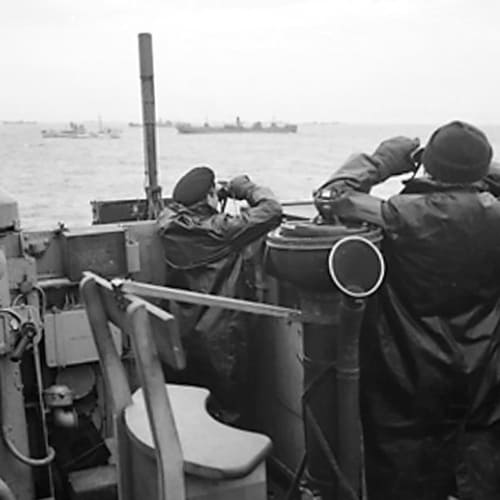
The Battle of the Atlantic, named by Winston Churchill, was a series of ongoing conflicts in the Atlantic Ocean between 1939 and 1943.
The threat of German U-boats made it difficult for American, British, and Canadian ships to maintain shipping routes across the ocean. By 1941, the operations of U-boats expanded further than ever. The Germans used the “wolfpack” maneuver to close in on Allied vessels at night.
Early forms of sonar were ineffective against this maneuver. Over the years, the Allied countries worked together to make sure shipping routes stayed secure.
The use of convoys, aircraft carriers, radio intelligence, and the interception of the Enigma code all helped to keep Allied vessels safe.
By 1943, German morale at sea was waning. The Allies destroyed 45 U-boats in April and May of that year and the Germans gave up on U-boat operations.
11) Battle of Stalingrad

The Battle of Stalingrad occurred during World War Two after the Germans invaded the Soviet Union in 1941. The battle lasted 199 days between 1942 and 1943.
Stalingrad was an important industrial and transport city located on the Volga River. Whoever controlled the city also had access to vital oil fields needed to supply armies.
The battle involved heavy bombing. At the height of the bombing, Germans unleashed 1,000 bombs in 48 hours. This is more than the worst moments of the Blitz in London.
Stalingrad leadership has been criticized for not evacuating their residents fast enough. The battle resulted in 1.7 and 2 million Axis and Soviet casualties, making the Battle of Stalingrad one of the deadliest in the war.
12) Siege of Leningrad

The siege of Leningrad lasted for about 900 days between 1941 and 1944. It is the worst siege in modern history, leaving 800,000 dead.
The siege began when German and Finnish forces surrounded Leningrad (modern Saint Petersburg). The Axis powers utilized bombing and psychological warfare tactics against the city’s population.
Civilians faced the threat of the Axis enemies and their own city’s officials. Under strict police control, the black market was shut down and morale was closely monitored.
Although they were starving, citizens of Leningrad were forced to at least appear like they had hope in their government. Common “food” consumed during the siege included wallpaper paste, pets, and Vaseline.
The climate of Leningrad also threatened the lives of trapped civilians. Many died after the electricity cut out and heat was no longer available.
13) Battle of Hürtgen Forest

The Battle of Hürtgen Forest remains the longest single battle fought by the United States Army. The battle took place in Germany from September to December 1944.
After liberating cities across western Europe, the Allies reached German border fortifications at the Siegfried Line. They planned to advance to the Roer River dams to prevent the Germans from flooding the area.
The most direct route to the dams was through the Hürtgen Forest, which included 200 square miles of dense trees. The Americans broke through hundreds of concrete fortifications surrounded by mine fields.
Their progress halted with the onset of the Battle of the Bulge. The Battle of Hürtgen Forest resulted in 33,000 American casualties.

